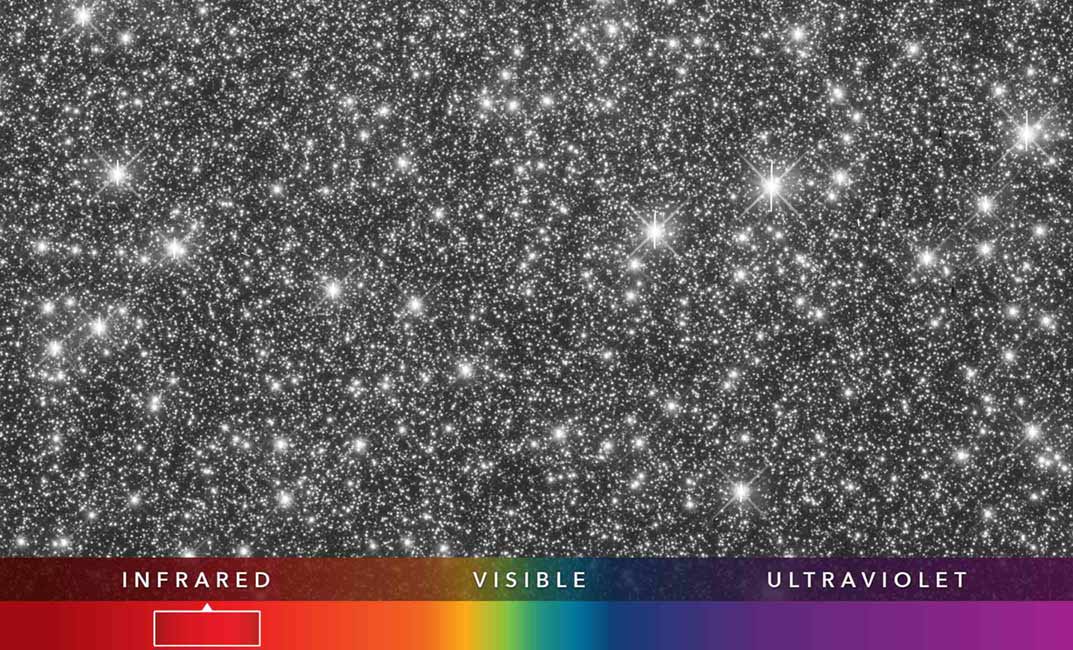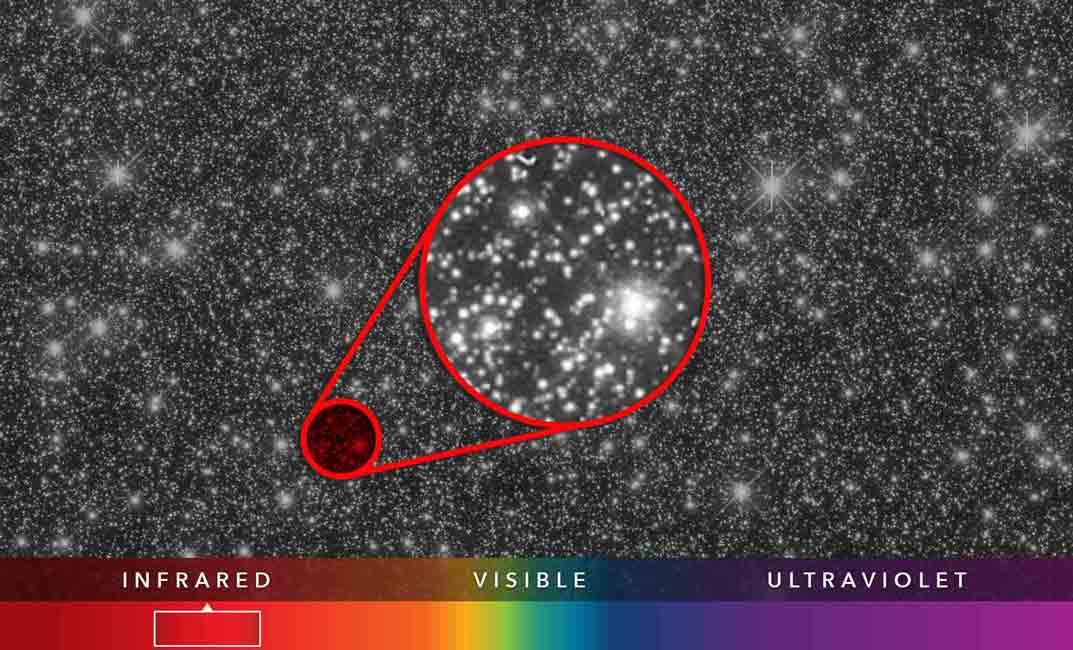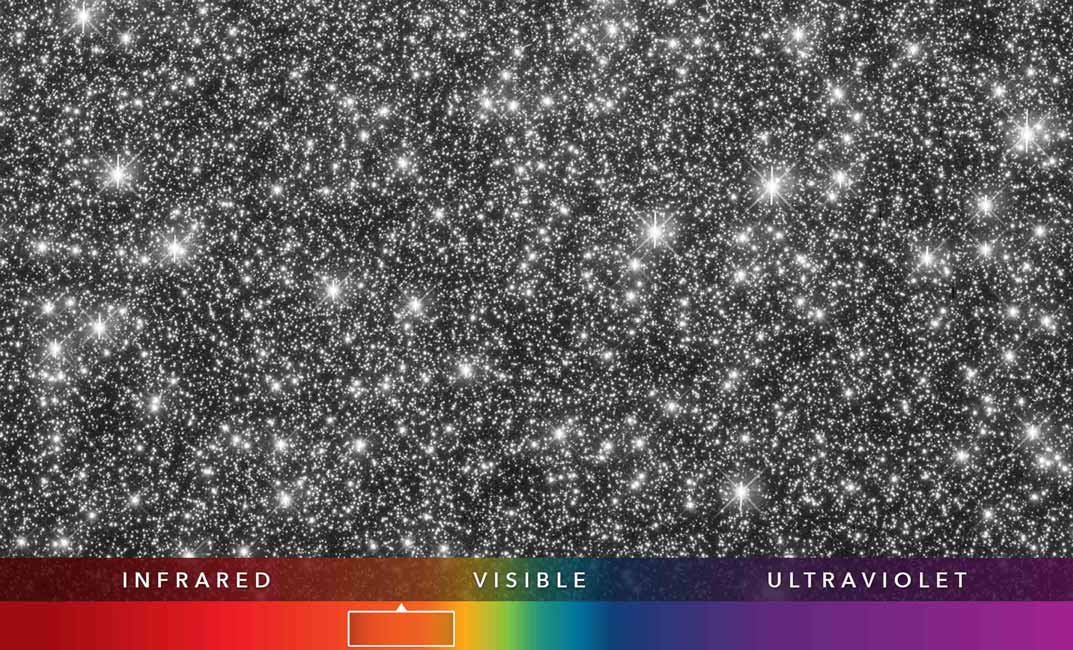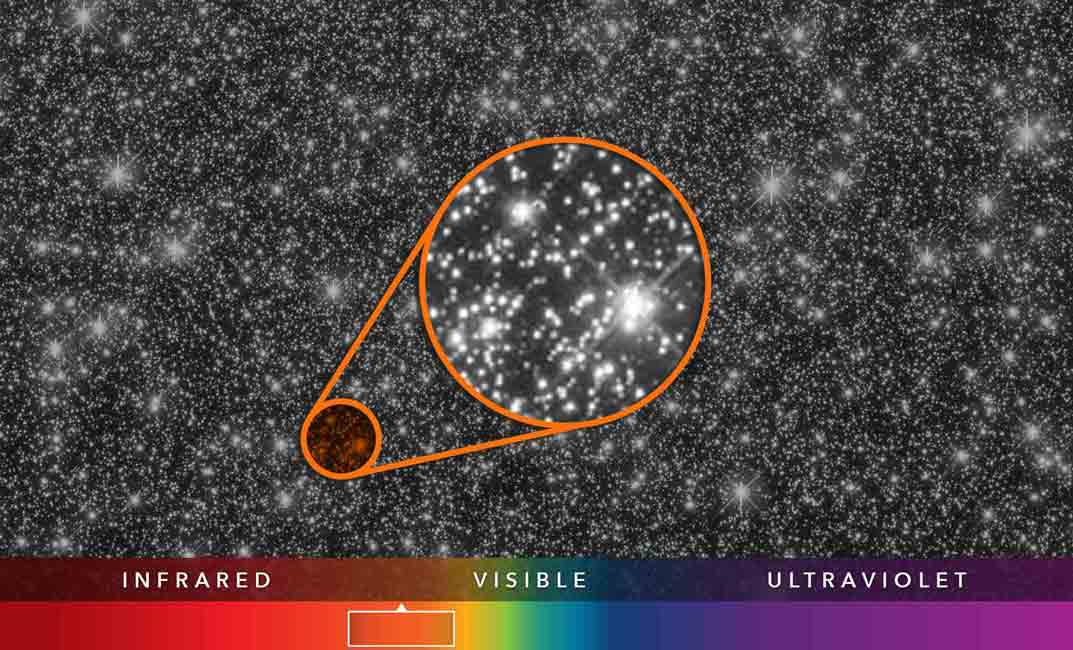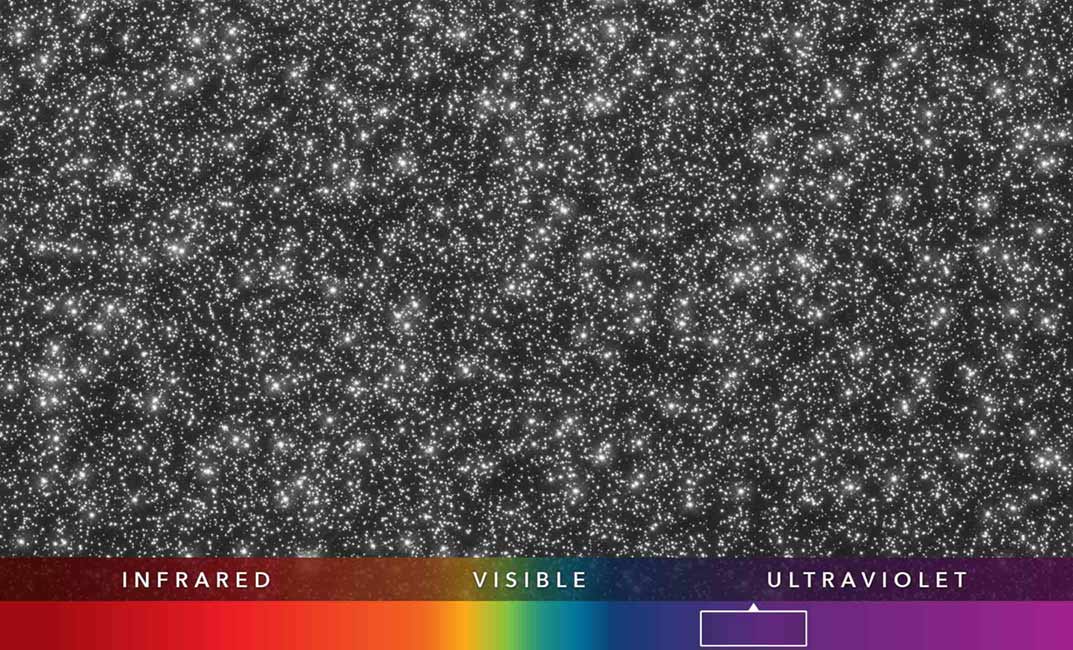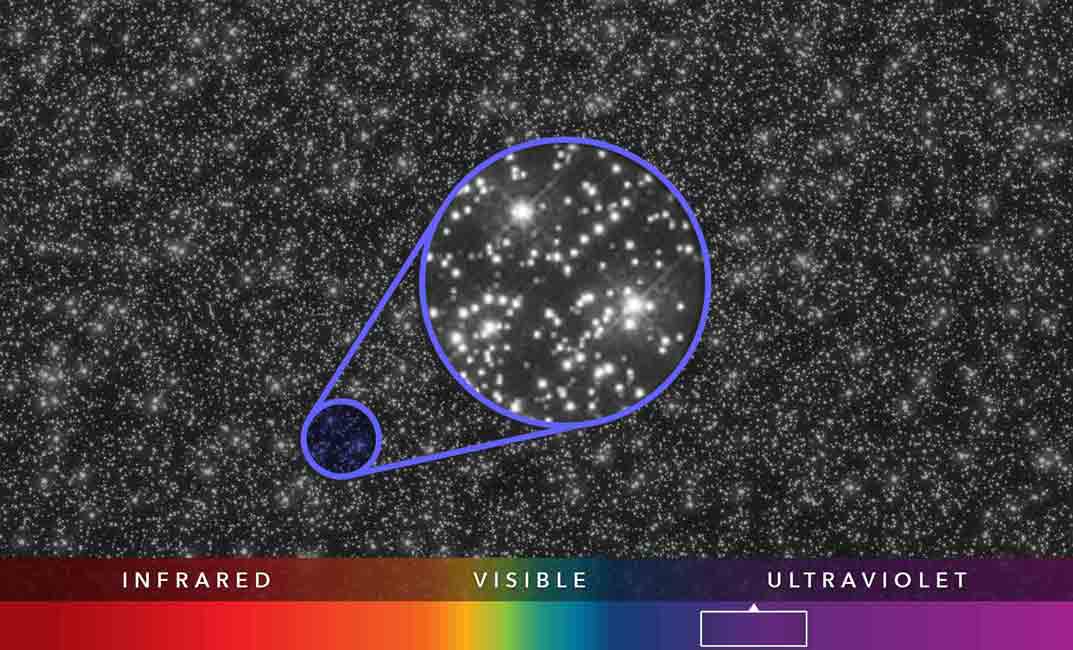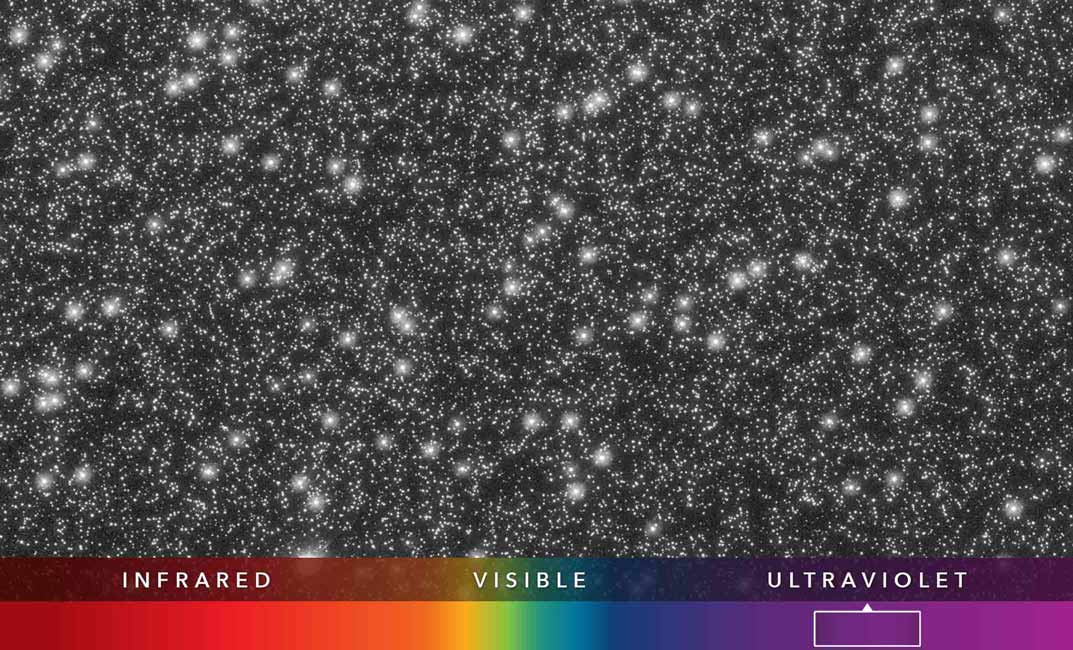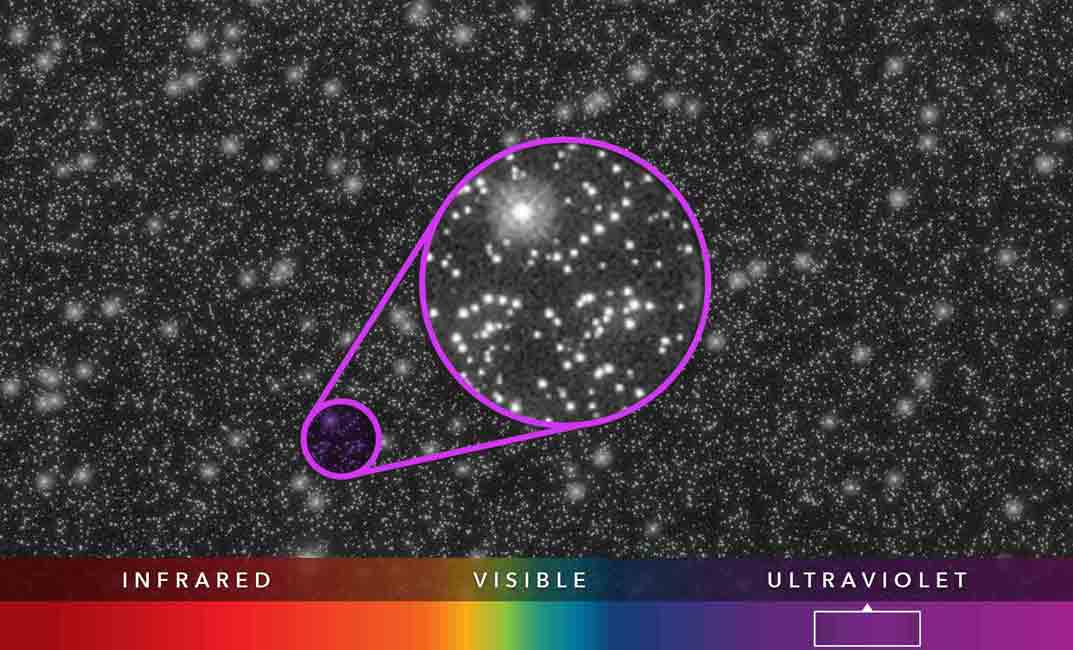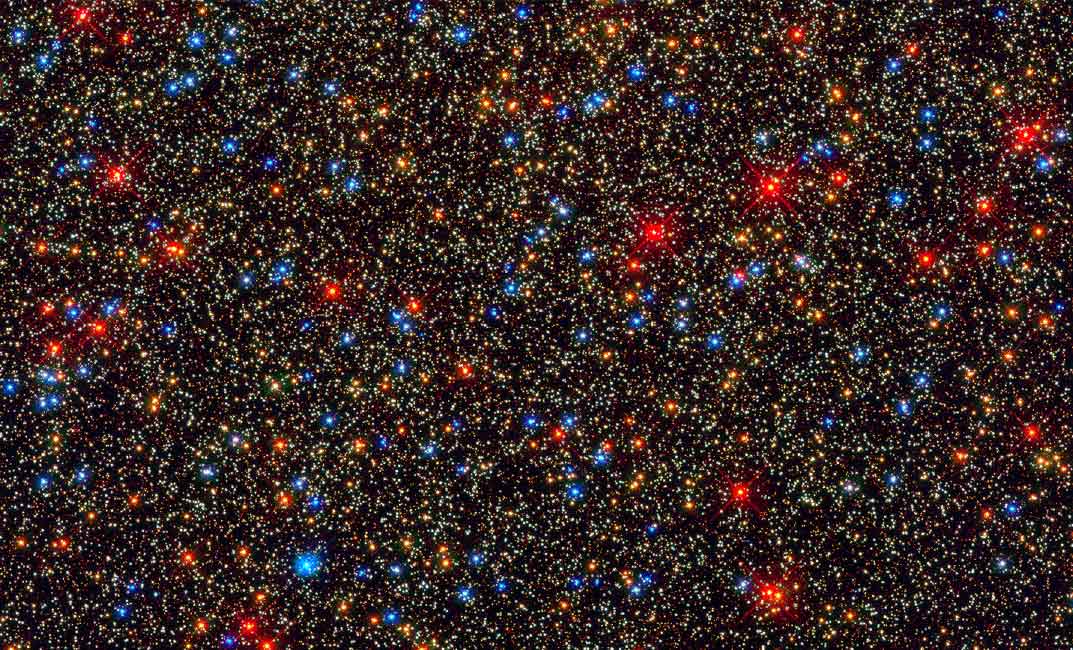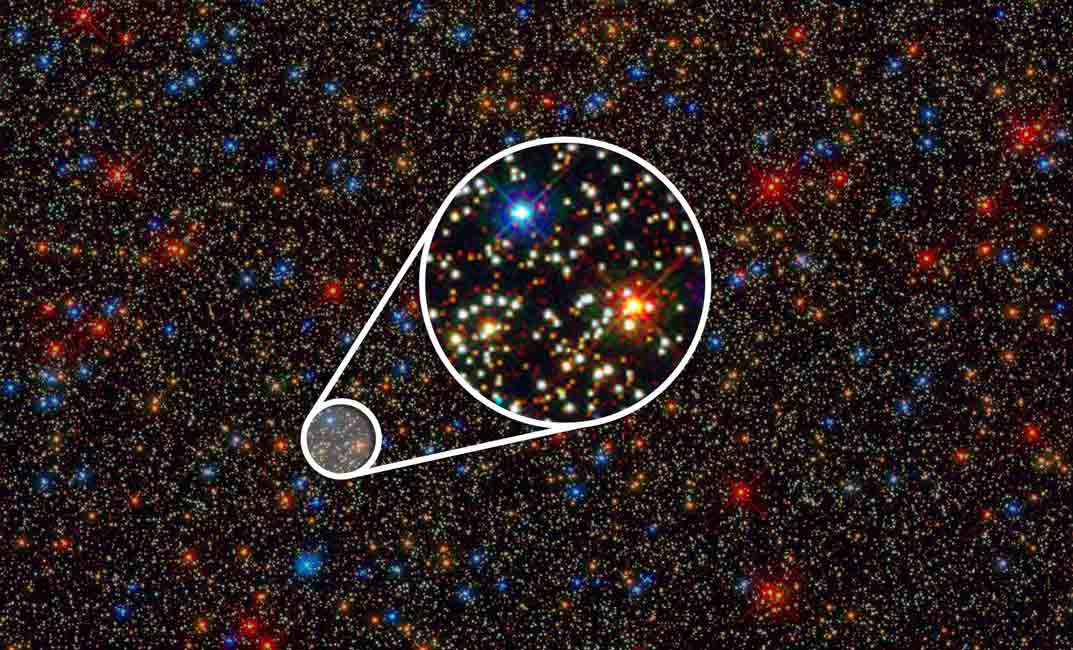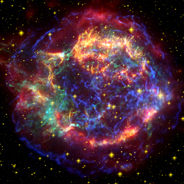Interactive Overview
Slider Interactive: A series of the same image seen in different kinds of light. Below the photograph is a horizontal rainbow bar that represents the electromagnetic spectrum, ranging from infrared (red) to mid-ultraviolet (purple). A small rectangle on the electromagnetic bar moves to match the kind of light shown in each image. Each version of the photo has a corresponding caption that is just below the electromagnetic spectrum bar. Below the caption is a horizontal slider bar with five labeled stops and a solid white circle. Dragging the white circle right and left along the slider bar causes elements of the image, labels, and caption to change. The change occurs gradually as one image, along with its associated caption and labels, fades out and the next fades in. A toggle button to the upper right of the image turns the image labels off and on. Some labels are in the form of text with arrows pointing to specific features in the image. Other labels are graphic overlays.
Slider Stops
From left to right, the slider stops are labeled: Near-infrared, Visible, Near-ultraviolet, Mid-ultraviolet, and Multi-wavelength.
Summary of Slider Stops
Sliding left to right reveals the following:
- “Near-infrared” stop shows how a portion of Omega Centauri is seen in near-infrared light, with certain objects—like red giant stars—more noticeable than in other kinds of light. This is the initial image shown when the interactive is loaded.
- “Visible” stop shows how the same portion of the star cluster is seen in visible light, with certain objects—like orange dwarf stars—more noticeable than in other kinds of light.
- “Near-ultraviolet” stop shows how the same portion of the star cluster is seen in near-ultraviolet light, with certain objects—like yellow dwarf stars—more noticeable than in other kinds of light.
- “Mid-ultraviolet” stop shows how the same portion of the star cluster is seen in mid-ultraviolet light, with certain objects—like aging stars—more noticeable than in other kinds of light.
- “Multi-wavelength” stop shows a colorful composite of all the previous wavelengths combined.
Stop 1: Near-infrared
Image Description: Near-infrared
A grayscale image of a section of the globular star cluster Omega Centauri against the dark night sky. The view is full of stars and many appear as small gray dots while larger ones with diffraction spikes are less frequent. A horizontal rainbow spectrum bar is below the photo, and has a rectangle with an arrow in the red section of the bar to indicate that this image is in infrared light.
Labels: Near-infrared
There is one text label and one graphic overlay. A small circle at the bottom left of the image is shaded red to highlight that part of the sky, and two red lines extending like arms emanate from that shape to connect to a larger circle that contains a magnified view of that area. In this zoomed in excerpt of the cluster, there is a white circle with diffraction spikes and a surrounding halo of light on the right, which is labeled “A red giant star pops out.”
Caption: Near-infrared
Although all stars emit light in a variety of wavelengths, those that stand out in one view tell us more about their makeup.
Stop 2: Visible
Image Description: Visible
This image reveals the same patch of sky, now seen in visible light. While the field of stars appears largely the same, a few stars decrease subtly in brightness. The horizontal rainbow spectrum bar below the photo has a rectangle with an arrow in the light orange section of the bar to indicate that this image is in visible light.
Labels: Visible
There is one text label and one graphic overlay. Except for its orange color, the overlay is identical to the previous stop, offering the same magnified look of the cluster. Toward the right side of the circle, just above the red giant star that was identified in the “Near-infrared” stop, there is a small gray dot labeled “Orange dwarf star.”
Caption: Visible
Orange dwarf stars are small and cool, lead long lives over billions of years, and stand out in visible light.
Stop 3: Near-ultraviolet
Image Description: Near-ultraviolet
This image reveals the same patch of sky, now seen in near-ultraviolet light. The stars that were brightest in the near-infrared and visible stops have noticeably decreased in brightness. Other stars have begun to subtly increase in brightness. The rectangle in the horizontal rainbow spectrum bar below the photo is located in the dark blue and purple area to indicate that this image is in near-ultraviolet light.
Labels: Near-ultraviolet
There is one text label and one graphic overlay. Besides having a dark indigo color to match the indicator of the electromagnetic spectrum bar below the image, the overlay is identical to the previous stop, offering the same magnified look of the cluster. On the left side in the circle, there is a small gray dot labeled “Yellow dwarf star.”
Caption: Near-ultraviolet
Yellow dwarf stars are hotter than red giants and orange dwarf stars, and are detected in near-ultraviolet light.
Stop 4: Mid-ultraviolet
Image Description: Mid-ultraviolet
This image reveals the same patch of sky, now seen in mid-ultraviolet light. The stars that appeared to increase in brightness in the near-ultraviolet stop are now much brighter. The rectangle in the horizontal rainbow spectrum bar below the photo is located in the light purple area of the bar to indicate that this image is in mid-ultraviolet.
Labels: Mid-ultraviolet
There is one text label and one graphic overlay. Besides the overlay being a light violet color to match the indicator of the electromagnetic spectrum bar below the image, it is identical to the previous stop, offering the same magnified look of the cluster. Toward the top of the magnified area, there is a white circle with a surrounding halo and diffraction spikes. It is larger than the other stars located nearby and is labeled “Aging star losing mass.”
Caption: Mid-ultraviolet
Stars at the end of their lives, which have exposed, hot cores, are brightest in this view.
Stop 5: Multi-wavelength
Image Description: Multi-wavelength
This image is a composite of the previous wavelengths explored. The view is full of small, red, yellow, and white stars, while larger, less frequent blue and red stars are scattered across the sky. The stars that were brightest in the near-infrared stop appear bright red. The stars that were brightest in the ultraviolet stop appear bright blue.
Labels: Multi-wavelength
There are two text labels and one graphic overlay. The overlay is white in color and offers the same magnified look of the cluster as in the previous stop. Toward the top left in the magnified section, there is a bright blue point that is labeled “Hot blue star.” Toward the bottom right in the magnified view, there is a red point that is labeled “Cool red star.” These were the same stars highlighted in the mid-ultraviolet and near-infrared stops.
Caption: Multi-wavelength
Since all of these stars are about the same distance from Earth, researchers can compare their brightness and temperatures.
